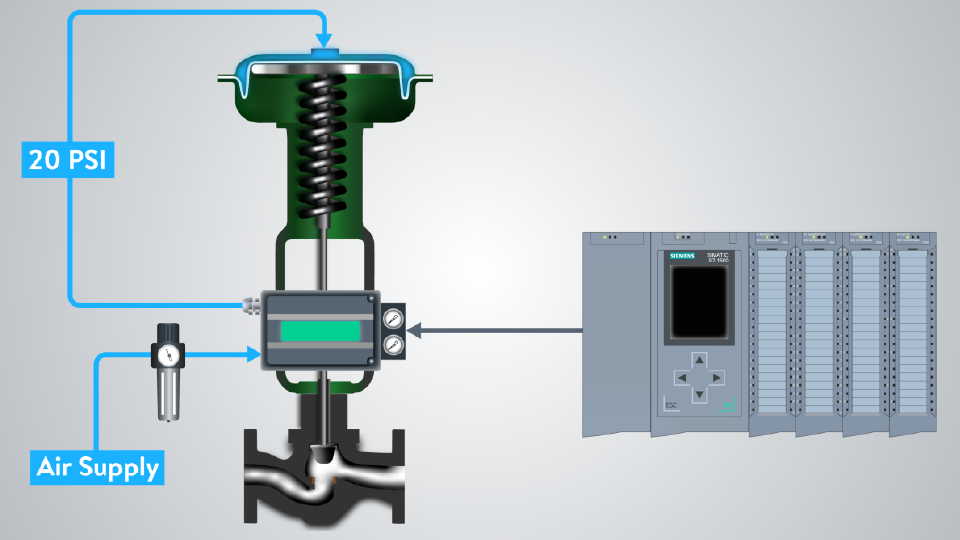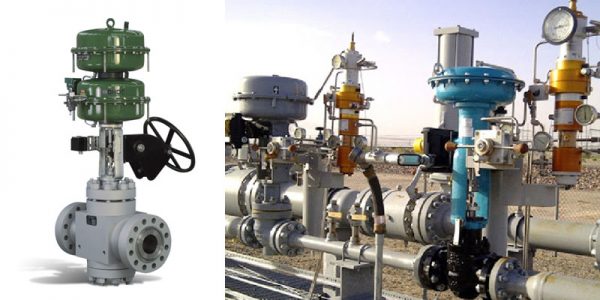Picking the Right Control Valves: An Overview to Optimum System Efficiency
Picking the Right Control Valves: An Overview to Optimum System Efficiency
Blog Article

Maximize Energy Savings and Comfort With Advanced Building Automation Controls
In the realm of modern architecture and center monitoring, the assimilation of innovative structure automation manages stands as an essential innovation. The merging of innovation and sustainability has birthed a brand-new age where energy efficiency, convenience optimization, and operational streamlining are no more obtainable truths however remote aspirations. By using the power of automation, structures can adapt, react, and evolve in manner ins which were once unimaginable. The possibility for significant energy financial savings and improved convenience is not just a pledge but an opportunity waiting to be satisfied. This paradigm change in structure management holds the essential to opening a world where ecological conscientiousness and occupant well-being sympathetically exist side-by-side within the walls of our frameworks.
Energy Efficiency Perks
Power performance advantages can dramatically lower energy consumption and functional prices in buildings. Energy-efficient systems, such as innovative structure automation controls, can maximize the usage of sources like heating, illumination, and cooling, leading to lower energy expenditures over time.
In addition, enhanced power performance can prolong the life-span of building tools and systems. By operating a lot more effectively, HVAC systems, light, and other building parts experience much less deterioration, resulting in reduced upkeep and replacement expenses. Furthermore, energy-efficient buildings usually command higher residential property worths and rental rates, offering long-lasting financial advantages to proprietors.
In addition, energy effectiveness can enhance passenger comfort and performance. Correctly controlled interior environments with optimal lighting and thermal conditions create a more positive and helpful work area, causing boosted worker complete satisfaction and performance. In general, the power efficiency benefits associated with sophisticated building automation controls are complex, incorporating price financial savings, ecological stewardship, and owner wellness.
Boosted Comfort Control
Enhancing convenience control in structure atmospheres requires an advanced assimilation of advanced automation systems for optimum occupant well-being. By making use of sophisticated building automation controls, centers can customize the interior setting to satisfy the specific requirements and choices of passengers. These systems make it possible for precise regulation of lights, temperature level, and air flow, creating a comfortable and effective atmosphere. Passenger contentment and efficiency are very closely connected to thermal comfort, making it vital to have systems in area that can adapt to altering conditions in real-time.
Improved comfort control goes past basic temperature level changes. It includes attributes such as individualized setups, occupancy sensors, and all-natural light usage to produce a receptive and dynamic environment. By integrating these advanced controls, buildings can not only improve convenience yet additionally enhance power effectiveness by maximizing system procedures based upon real occupancy and usage patterns. Eventually, focusing on owner convenience through advanced automation systems causes a more satisfying and healthier indoor atmosphere.
Functional Performance Improvements

Additionally, the implementation of real-time surveillance and analytics tools enables structure operators to identify energy inadequacies and functional anomalies without delay. By constantly keeping track of power use patterns and system you can find out more efficiency metrics, changes can be made in real-time to enhance power usage and guarantee peak functional performance. control valves. Furthermore, incorporating need response techniques right into building automation controls can further improve functional effectiveness by dynamically readjusting energy usage based upon grid problems and rates signals
Indoor Environment Optimization
Reliable interior climate optimization is a fundamental facet of building automation controls, making certain occupants' convenience and well-being while optimizing energy savings. By using innovative sensing units and controls, building automation systems can constantly readjust and monitor temperature, moisture degrees, air quality, and ventilation to create an ideal interior environment. Maintaining comfortable and constant conditions not only improves resident fulfillment however also improves efficiency and general wellness.
Indoor environment optimization also plays a critical duty in energy effectiveness. By fine-tuning ventilation, cooling, and heating systems based upon real-time information and tenancy patterns, constructing automation controls can considerably reduce energy consumption - control valves. Applying strategies such as demand-controlled air flow and thermal zoning can assist decrease power waste while guaranteeing that each area original site of the building gets the necessary conditioning.

Lasting Environment Development
Structure automation manages not just enhance interior climate problems for energy performance and owner convenience but also lay the foundation for developing a lasting atmosphere with strategic administration of sources and systems. By incorporating advanced structure automation innovations, such as sensors, actuators, and smart software application, centers can keep track of and adjust power use in real-time to decrease waste and reduce their carbon footprint. These systems allow predictive upkeep, determining possible issues before they escalate and maximizing tools efficiency to enhance long life and performance.
Furthermore, lasting environment creation prolongs past energy management to incorporate water preservation, waste reduction, and indoor air quality improvement. Building automation controls can control water use, detect leaks, and make certain appropriate waste disposal methods, adding to overall sustainability efforts. Additionally, by keeping an eye on and controlling air flow and purification systems, these technologies enhance passenger health and productivity while reducing power consumption connected with a/c procedures.
Final Thought
To conclude, advanced building automation controls deal substantial benefits in terms of power financial savings, comfort control, operational effectiveness, interior environment optimization, and developing a sustainable setting. By implementing these controls, structures can attain optimal performance while reducing energy usage and enhancing owner convenience. It appears that using advanced automation technology is crucial in improving building efficiency and creating a more lasting future.
Power efficiency benefits can considerably reduce energy usage and functional prices in structures. Overall, the energy efficiency advantages associated with sophisticated structure automation controls are complex, incorporating price savings, environmental stewardship, and resident wellness.
Furthermore, incorporating demand response methods into structure automation controls can better improve functional efficiency by dynamically changing power use based on grid problems and rates signals.
Structure automation browse around these guys regulates not just enhance indoor climate conditions for energy effectiveness and passenger convenience yet additionally lay the structure for producing a lasting setting with calculated administration of systems and resources.In verdict, advanced building automation controls deal significant benefits in terms of energy savings, convenience control, functional performance, indoor climate optimization, and creating a lasting environment.
Report this page